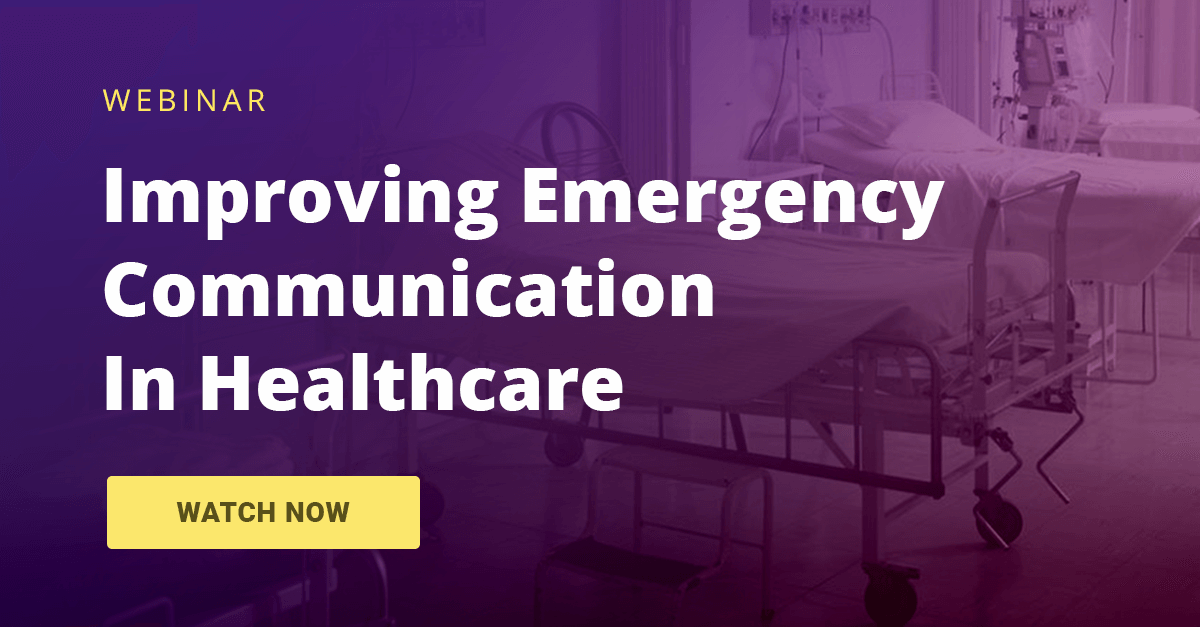CMS Emergency Preparedness Guidelines: What You Need To Know
Surveyors have started auditing healthcare organizations for compliance with the new CMS Emergency Preparedness Rule. While emergency preparedness planning may be more familiar to hospitals, other providers are included in the rule and need to put plans in place for training and annual exercises.
What is the CMS Rule?
The Centers for Medicare & Medicaid Services (CMS) emergency preparedness rule went into effect on Nov. 15, 2017. The CMS emergency preparedness rule established national requirements to guarantee adequate planning for both natural and man-made disasters, and coordination with federal, state, tribal, regional and local emergency preparedness systems.
The CMS emergency preparedness rule features four main pillars:
- Assess threats: Examples of possible threats include hazards likely in your geographic area, care-related emergencies, equipment failures, interruptions in communications and loss of your facility. The healthcare industry has also referred to risk assessments as a Hazard Vulnerability Assessments or Analysis (HVA).
- Set policies and procedures: Confirm that your policies comply with federal and state laws. An example includes procedures for safely evacuating the facility (exit signs, staff responsibilities, patient needs, etc.).
- Develop a communications plan: Build a well-coordinated plan that includes names, phone numbers and other communication methods for your facility, other healthcare providers, and state and local public departments and emergency management services.
- Implement training and exercises: Initiate emergency preparedness training for all personnel and include other healthcare providers in your area. Maintain documentation, including pre- and post-tests, for all exercises and emergency events. Participate in both tabletop discussion and large-scale functional exercises to test your preparedness plans.
“Communications have to be front and center for anything you're doing in any exercise and they have to be evaluated for their effectiveness,” said Meg Nash, MPH, in a recent AlertFind webinar. “You have to ask if the communication was clear and effective? If not, you need to take action to fix it and add those revised communications back into your plan.”
Who Must Follow The Rule?
The CMS Rule and its pillars apply to 17 provider and supplier types, most notably hospitals and healthcare centers. These also include:
- Critical access hospitals
- Skilled nursing facilities
- Nursing homes
- Ambulatory surgical centers
- Community mental health centers
- Inpatient psychiatric services
- Home health agencies
The CMS rule applies to all healthcare providers that receive Medicare and Medicaid reimbursement. If the providers fail to comply with the rule they risk losing their reimbursements. So far, this hasn’t happened, Nash said. Instead, the surveyors have issued a remediation plan, with a set amount of time (less than a year) to fix any issues. There is also an appeals process for violations that healthcare organizations can use to dispute a surveyor’s finding.
Good News: You May Have Already Done Some Of The Work
Healthcare providers that are already accredited may be able to use some of those completed actions to also count toward the compliance of the CMS Rule's requirements. Think of them as transferable college credits -- some of the work you’ve done to become accredited also qualifies for the CMS requirements.
The Yale New Haven Health System’s Crosswalk details what actions done for joint accreditation also count for the CMS Rule. If you’re an accredited facility, you can view the Crosswalk here and see what items you can cross off your list for the CMS Rule requirements. The crosswalk is intended to serve merely as a reference guide and not as interpretive guidance or instructions on how to achieve compliance.
If you are looking for more ideas about how to build an emergency communication plan, download AlertFind's eBook, “10 Actions Healthcare Organizations Can Take To Improve Their Emergency Preparedness And Communications.”
Nash recently provided much deeper guidance for healthcare organizations on how to comply with the CMS Emergency Preparedness Rule during AlertFind’s recent webinar, “Improving Emergency Communications Under The Emergency Preparedness Rule: Are You Ready?”

You are well on your way toward protecting your staff and organization.
Take the next step toward protecting your organization by learning more about emergency notification systems and the vital role they play in your emergency preparedness plan.